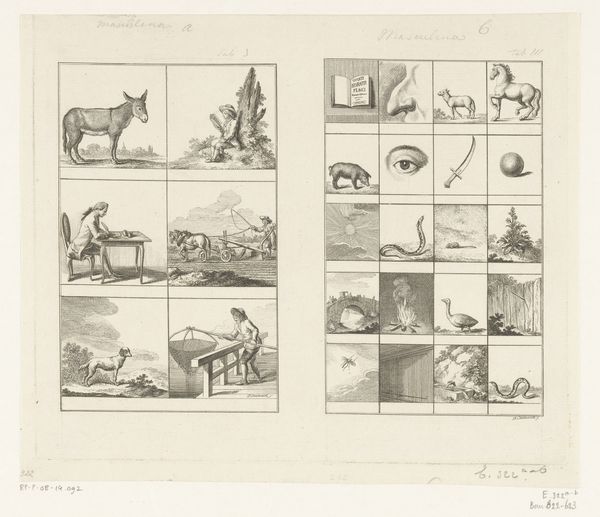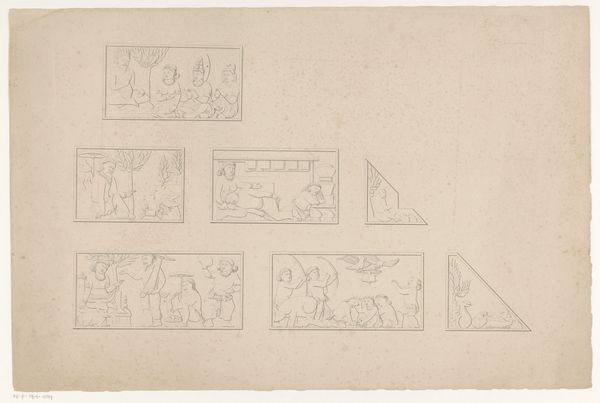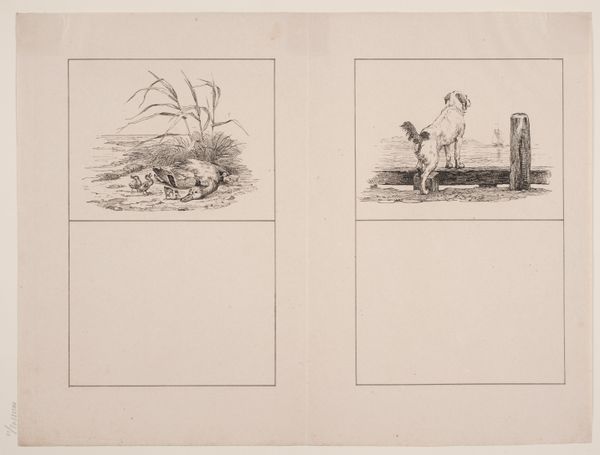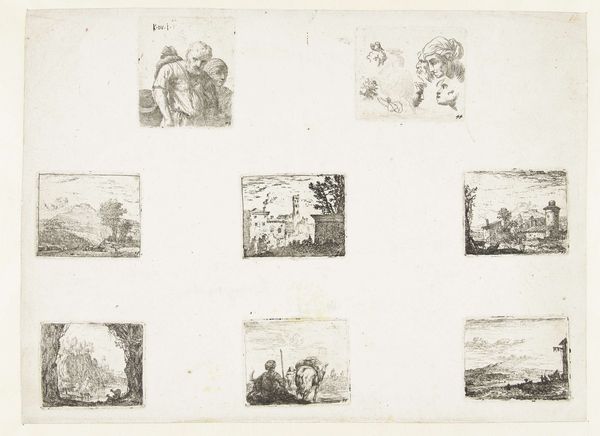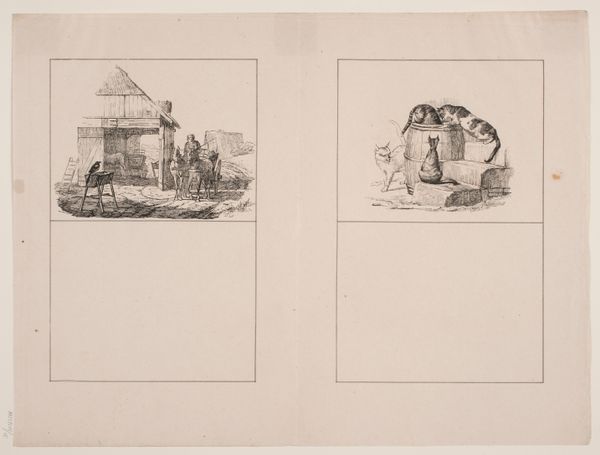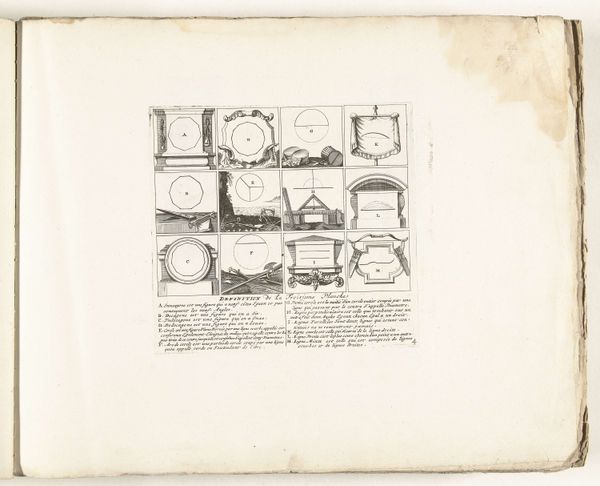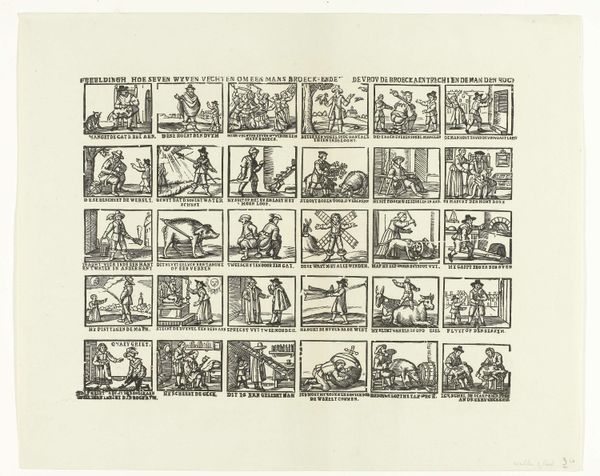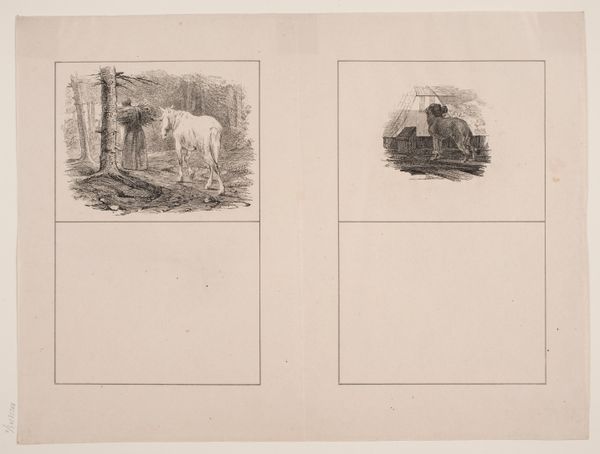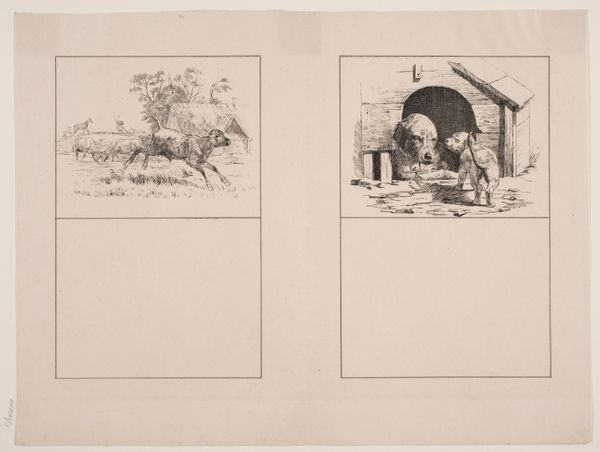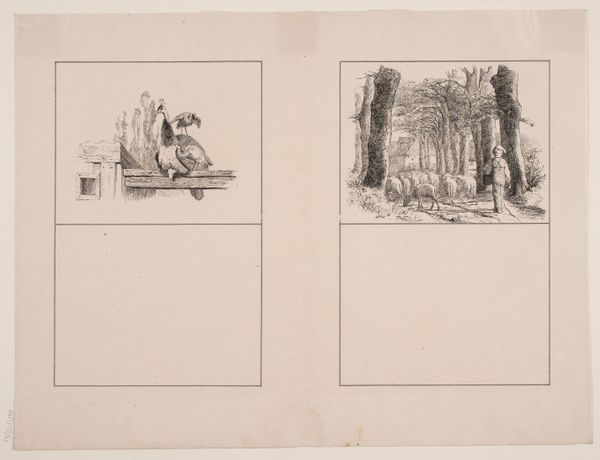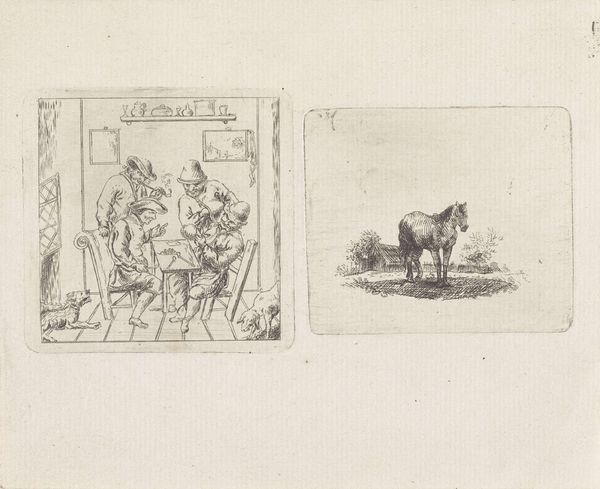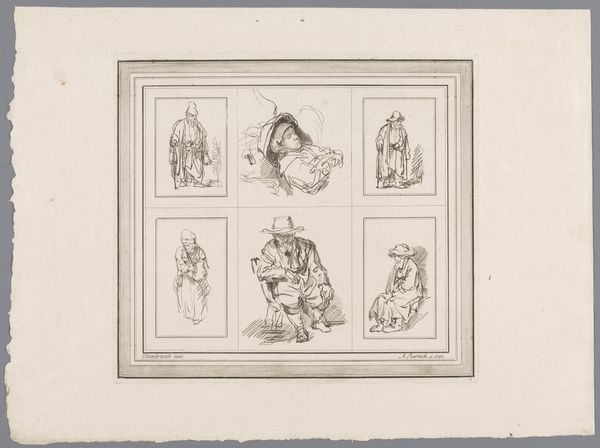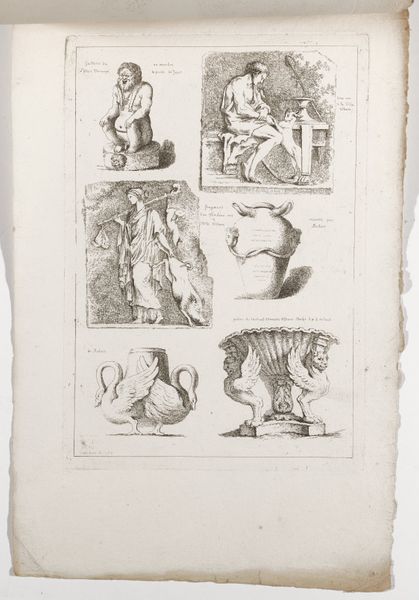
Voorbeelden van vrouwelijke zelfstandige naamwoorden in het Latijn (femina) 1779
0:00
0:00
Dimensions: height 205 mm, width 246 mm
Copyright: Rijks Museum: Open Domain
Curator: Here at the Rijksmuseum, we have a rather curious engraving from 1779 by Daniel Nikolaus Chodowiecki. It’s entitled “Voorbeelden van vrouwelijke zelfstandige naamwoorden in het Latijn (femina)” – which translates to “Examples of feminine nouns in Latin (femina)”. Editor: My first impression is…intricate. A grid of miniature worlds, almost like a beautifully rendered memory game or perhaps an early version of flashcards? It's captivating in its detail, especially considering the size. Curator: Precisely! Chodowiecki was known for his ability to pack incredible detail into small-scale works. He created these as illustrations for books and periodicals. This print exemplifies Neoclassical taste: orderly, didactic, and focused on clarity. He uses symbolism tied to feminine nouns. The skull, the woman reading a book, the ear all suggest knowledge, memory, and representation. Editor: The juxtaposition of the woman reading next to the skull definitely lends itself to symbolic analysis. The memento mori feels starkly juxtaposed against learning. Is he commenting on women's access to education, its fragility or perhaps mortality in a broader context? Curator: Possibly. In the late 18th century, access to education for women was evolving, though still limited. This print perhaps hints at the intellectual pursuits considered suitable for women but contained by social structures, mortality, and virtue. The rose symbol reinforces it. Editor: Right, the rose! A classic symbol of feminine beauty, often paired with notions of virtue or transience. The choice to arrange these emblems alongside figures is fascinating, especially considering Chodowiecki’s involvement with the Berlinische Monatsschrift – a periodical dedicated to enlightenment ideals. How did his illustrations reflect and challenge those conversations around gender and social roles? Curator: His work in that time served to both reflect and critique evolving societal norms. He was very canny to current philosophical thinking. These seemingly simple images opened conversations about social and moral concerns. This encouraged discussion. The images acted almost like miniature rhetorical devices, meant to stimulate critical reflection. Editor: The idea of images as catalysts is powerful. It encourages us to delve beneath the surface, decode, and re-evaluate these historical discussions on gender. Curator: I hope visitors appreciate Chodowiecki's commentary through these meticulously placed symbols, and maybe think about those Latin feminine words differently!
Comments
No comments
Be the first to comment and join the conversation on the ultimate creative platform.
